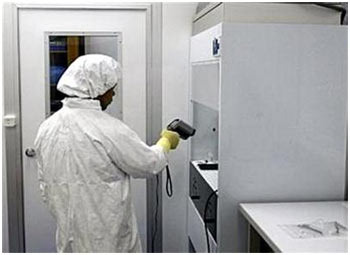Austria: Plutonium leaks at IAEA nuclear laboratory
On August 3, a plutonium leak happened at the nuclear laboratory of the International Atomic Energy Agency (IAEA) in Seibersdorf, south of Austria's capital Vienna. Luckily no one is in danger and there is no risk of the environment.
According to United Nations nuclear supervisors, the cause of the leak due to pressure in a bottle of sealed plutonium samples increased the cork, causing contamination in the laboratory.
This laboratory was used to test samples (uranium or plutonium) during IAEA inspections. Austrian officials said when the incident happened, no one was in the laboratory and no one was in danger. An investigation is underway.
Daniel Kapp, an Austrian Environment spokesman, said the leak was detected and alarmed through an air monitoring system and they did not detect radioactive material outside the laboratory.
Last November, the director of the IAEA Mohammed ElBaradei warned that the laboratory, built in 1970, was out of date, failing to meet United Nations safety standards. However, according to the IAEA, the leak on August 3 was not related to the shelf life of the laboratory.

A scientist works at one of the IAEA laboratories in Seibersdorf in 2002 - (Photo: AFP)
- Conceptual design of large plutonium nuclear reactor
- Increasing the role of IAEA in ensuring nuclear safety
- IAEA will cooperate to help Vietnam with nuclear power
- The most toxic nuclear facility in the United States
- IAEA enhances the ability to analyze nuclear materials
- Vietnam was elected Chairman of the IAEA Board of Governors
- The IAEA approved a nuclear safety plan
- VN is committed to ensuring the highest security
- Harmful effects of plutonium radioactivity
- Why does the spacecraft fly for hundreds of years without running out of fuel?
- IAEA assesses the level of nuclear safety in Japan
- IAEA evaluates the development of Vietnam's nuclear power infrastructure
 Vietnam 5th Asian champion on fuel-efficient vehicles
Vietnam 5th Asian champion on fuel-efficient vehicles We can read all NASA studies completely free of charge
We can read all NASA studies completely free of charge Singer and songwriter Bob Dylan won the 2016 Nobel Prize for Literature
Singer and songwriter Bob Dylan won the 2016 Nobel Prize for Literature Scientific revolution in Asia
Scientific revolution in Asia